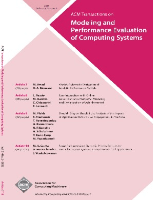
ACM Transactions on Modeling and Performance Evaluation of Computing Systems
Scope & Guideline
Advancing the Science of Computing System Performance.
Introduction
Aims and Scopes
- Modeling Techniques for Computing Systems:
The journal emphasizes various modeling techniques, including queuing theory, stochastic processes, and agent-based modeling, to analyze and predict the behavior of computing systems under different workloads and configurations. - Performance Evaluation Metrics:
Research published in the journal often explores new metrics and methodologies for assessing system performance, reliability, and efficiency, including metrics related to throughput, latency, and resource utilization. - Optimization Strategies:
A significant focus is placed on optimization strategies for computing systems, including load balancing, resource allocation, and scheduling algorithms, aimed at improving overall system performance. - Emerging Technologies and Applications:
The journal encompasses research on emerging technologies such as cloud computing, edge computing, and machine learning, investigating their impact on system performance and offering novel performance evaluation techniques. - Interdisciplinary Approaches:
There is a consistent emphasis on interdisciplinary methodologies that integrate concepts from computer science, operations research, and engineering to address complex performance evaluation challenges.
Trending and Emerging
- Machine Learning for Performance Optimization:
There is a significant increase in research that applies machine learning techniques to optimize performance in various computing systems, indicating a trend toward leveraging AI for system improvement. - Cloud and Edge Computing Performance:
The exploration of performance evaluation in cloud and edge computing environments has surged, reflecting the growing importance of these paradigms in modern computing architectures. - Energy Efficiency and Sustainability:
Research focusing on energy-efficient computing and sustainability practices has become more prominent, highlighting the industry's shift towards environmentally conscious computing solutions. - Real-time and Adaptive Systems:
An emerging theme is the study of real-time and adaptive systems that can respond dynamically to changing workloads and environmental conditions, which is critical for modern applications. - Cyber-physical Systems and IoT:
The integration of performance evaluation methodologies in cyber-physical systems and the Internet of Things (IoT) is gaining traction, emphasizing the need for robust evaluation frameworks in these interconnected environments.
Declining or Waning
- Traditional Queuing Theory:
Research specifically focused on classical queuing models has decreased, indicating a shift toward more complex and realistic modeling approaches that incorporate modern computing challenges. - Static Performance Models:
There is a noticeable reduction in the publication of static performance models, suggesting a transition towards dynamic and adaptive modeling techniques that reflect real-time system behaviors. - Basic Resource Allocation Strategies:
Basic resource allocation strategies appear to be waning, with researchers preferring to explore more intricate and context-aware approaches that align with contemporary computing environments. - Isolated System Evaluations:
The focus on evaluating isolated systems without considering interactions in networked and distributed environments has diminished, reflecting the need for more holistic approaches to performance evaluation.
Similar Journals
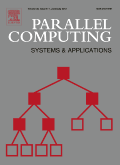
PARALLEL COMPUTING
Connecting Ideas Across the Spectrum of Computing.PARALLEL COMPUTING is a premier academic journal dedicated to advancing research in the dynamic and rapidly evolving field of parallel and distributed computing. Published by Elsevier, this journal has been at the forefront of technological advancements since its inception in 1984, engaging a global audience and fostering a rich dialogue among researchers and practitioners alike. With an impressive impact factor that reflects its relevance in the academic community, PARALLEL COMPUTING is currently categorized in multiple fields, including Artificial Intelligence (Q3), Computer Graphics and Computer-Aided Design (Q2), and others, highlighting its multidisciplinary scope. As a vital resource, the journal features cutting-edge research articles, reviews, and methodologies that drive innovation across various domains such as hardware architecture, software engineering, and theoretical computer science. Although it does not offer open access, the journal's traditional publication model ensures rigorous peer review and high scholarly standards. Researchers, professionals, and students are encouraged to engage with the latest findings and contribute to the journal's commitment to excellence in parallel computing.

Proceedings of the ACM on Measurement and Analysis of Computing Systems
Elevating Standards in Computing Research and AnalysisProceedings of the ACM on Measurement and Analysis of Computing Systems, published by the Association for Computing Machinery, is a pivotal journal in the realms of Computer Science and Engineering, particularly esteemed for its comprehensive focus within the fields of Computer Networks and Communications, Hardware and Architecture, and Safety, Risk, Reliability and Quality. With an impactful presence since its convergence in 2019—and now spanning from 2021 to 2024—this journal upholds rigorous standards, reflected in its classification as Q1 in Computer Science (miscellaneous) and in key safety-related categories. Researchers and professionals will find the journal's emphasis on measurement and analytical solutions critical for advancing computational efficiency and system reliability in real-world applications. The journal does not currently have open access, maintaining its academic rigor and exclusive content that aims to serve the tech-savvy community dedicated to exploring and addressing the challenges within modern computing systems. With Scopus rankings demonstrating a steady impact in the field, particularly recognised within safety and reliability domains, the Proceedings of the ACM stands as an indispensable resource for those seeking to deepen their expertise and contribute to the evolving landscape of computing research.
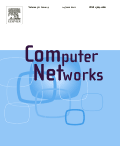
Computer Networks
Exploring Cutting-Edge Networking TechnologiesComputer Networks, a prestigious journal published by Elsevier, stands at the forefront of the field of computer networking and communications. Established in 1978, this journal has consistently provided a robust platform for the dissemination of high-quality research, currently holding a Q1 ranking in its category as of 2023, specifically within the Computer Science - Computer Networks and Communications sector, placing it in the top 10% of journals in its field (ranked #38 out of 395). With a focus on innovative networking technologies and fundamental theories, Computer Networks showcases original research articles, comprehensive reviews, and significant advancements that drive the academic community and industry practices forward. Although it follows a non-open access model, it remains widely accessible through various academic databases, ensuring that professionals, researchers, and students can engage with its valuable content. The journal's commitment to excellence contributes to its high impact factor, solidifying its role as an essential resource for those aiming to stay at the cutting edge of networking research.

International Journal of Networked and Distributed Computing
Empowering Scholars in the Realm of ComputingWelcome to the International Journal of Networked and Distributed Computing, published by SpringerNature, a premier outlet for cutting-edge research in the realms of computer networks and distributed computing systems. Established as an Open Access journal since 2013 and based in the Netherlands, this publication strives to disseminate high-quality, peer-reviewed studies that address the complexities of contemporary computing challenges. With an impact factor that reflects its growing influence—positioned in the Q3 category for both Computer Networks and Communications and Computer Science Applications—this journal serves as a pivotal resource for scholars and practitioners aiming to advance knowledge and innovation in this rapidly evolving field. The journal encompasses diverse topics, from network protocols to distributed algorithms, ensuring that researchers, professionals, and students can find relevant insights and methodologies to inform their work. Join us in exploring the depths of networked and distributed computing, contributing to a collaborative academic environment that shapes the future of technology.
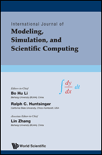
International Journal of Modeling Simulation and Scientific Computing
Advancing the Frontiers of Simulation and ComputingThe International Journal of Modeling Simulation and Scientific Computing, published by WORLD SCIENTIFIC PUBL CO PTE LTD, is a pivotal resource in the realms of Computer Science Applications and Modeling and Simulation. With an ISSN of 1793-9623 and an E-ISSN of 1793-9615, this journal serves as a platform for innovative and high-quality research from 2010 to 2024, contributing to the advancement of methodologies and applications in various scientific fields. Although currently categorized in the Q4 quartile for both recognized domains and positioned in the 42nd and 36th percentiles in the Scopus rankings for Mathematics and Computer Science respectively, the journal encourages scholarly exchange and fosters the integration of modeling and computational analysis in scientific research. Researchers, professionals, and students alike will find this journal an essential tool to stay updated with trends, methodologies, and cutting-edge findings in simulation and computational techniques that drive scientific inquiry today.
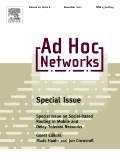
Ad Hoc Networks
Shaping the Landscape of Ad Hoc NetworkingAd Hoc Networks, published by Elsevier, is a leading journal in the fields of Computer Networks and Communications, Hardware and Architecture, and Software, with an impressive Q1 ranking in all three categories as of 2023. With an ISSN of 1570-8705 and an E-ISSN of 1570-8713, this journal offers a robust platform for disseminating cutting-edge research and advancements in network technologies, emphasizing the importance of efficient communication protocols and architectures in contemporary computing environments. Operating from the Netherlands, it has emerged as a pivotal resource for researchers and professionals seeking to explore novel methodologies, frameworks, and applications within the domain of ad hoc and wireless networks. The journal's high impact factor and Scopus rankings—44th in Computer Networks and Communications, 20th in Hardware and Architecture, and 53rd in Software—underscore its relevance and authority in the academic community. Ad Hoc Networks is committed to fostering a deeper understanding of the complexities and innovations in network design, making it an essential read for anyone invested in the future of communication technology.
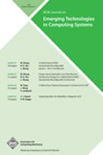
ACM Journal on Emerging Technologies in Computing Systems
Advancing Knowledge in Cutting-Edge TechnologiesACM Journal on Emerging Technologies in Computing Systems, published by the Association for Computing Machinery, stands as a premier platform dedicated to the exploration and discussion of avant-garde advancements in computing systems. With an ISSN of 1550-4832 and an E-ISSN of 1550-4840, this journal has achieved notable recognition, holding a 2023 Q2 ranking in key fields such as Electrical and Electronic Engineering, Hardware and Architecture, Nanoscience and Nanotechnology, and Software. Spanning from 2005 to 2024, it provides a critical forum for researchers, professionals, and students alike to disseminate innovative research and applications that shape the future of technology. Although currently not open access, the journal's commitment to high-quality, peer-reviewed content ensures its relevance and impact, as reflected in its competitive Scopus ranks across various disciplines. Engage with groundbreaking research that propels the frontiers of computational systems in this dynamic academic journal.

Journal of Cloud Computing-Advances Systems and Applications
Unveiling the Power of Cloud ApplicationsThe Journal of Cloud Computing - Advances Systems and Applications, published by Springer, serves as a premier platform for disseminating cutting-edge research in the fields of cloud computing, computer networks, and software technologies. With an impressive impact factor and ranked in the top quartile for Computer Networks and Communications and Software categories in 2023, this open access journal has gained significant recognition within the academic community since its establishment in 2012. The journal not only provides valuable insights into innovative applications and advancements in cloud technologies but also supports collaboration among scholars, practitioners, and industry leaders. Operating from the vibrant hub of New York City, it boasts a robust international readership, ensuring that the latest findings reach a diverse audience. Authors and researchers are encouraged to engage with this vital resource, which is dedicated to exploring the transformative potential of cloud computing across multiple disciplines.

SIMULATION MODELLING PRACTICE AND THEORY
Transforming Theory into Practice in Simulation Modeling.SIMULATION MODELLING PRACTICE AND THEORY is a leading academic journal published by Elsevier that focuses on the dynamic and evolving fields of simulation modeling and its applications across various disciplines. Established in 2002, this journal has rapidly gained recognition within the academic community, achieving a prestigious Q1 ranking in both Hardware and Architecture, as well as Modeling and Simulation for 2023. With an impressive impact factor that reflects its significance, it offers essential insights and findings pertinent to researchers, professionals, and students alike. The journal's scope encompasses a wide array of topics, encouraging interdisciplinary collaboration and innovation. Open access options further enhance visibility and accessibility of published research, contributing to the dissemination of knowledge in this critical field. Operating from its base in Amsterdam, Netherlands, SIMULATION MODELLING PRACTICE AND THEORY continues to provide a vital platform for advancements in simulation methodologies and applications, fostering an environment where theoretical principles and practical implementation converge.
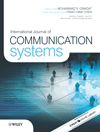
INTERNATIONAL JOURNAL OF COMMUNICATION SYSTEMS
Pioneering Research in Global Communication SystemsInternational Journal of Communication Systems, published by Wiley, is a premier scholarly publication dedicated to advancing the field of communication systems and network engineering. With an ISSN of 1074-5351 and E-ISSN 1099-1131, this journal has emerged as a critical resource for researchers and professionals alike, showcasing innovative research from 1994 to 2024. Holding a distinguished Q2 quartile ranking in both Computer Networks and Communications and Electrical and Electronic Engineering, it ranks within the top tiers of its field, reflecting its high impact and relevance. The journal's focus spans a wide range of topics within these disciplines, including but not limited to, advanced communication protocols, network design, signal processing, and emerging technologies. Although it does not currently offer open access options, the journal remains committed to disseminating high-quality research to contribute meaningfully to the scientific community. Researchers, professionals, and students will find invaluable insights and ideas to further their work and understanding in this dynamic field.